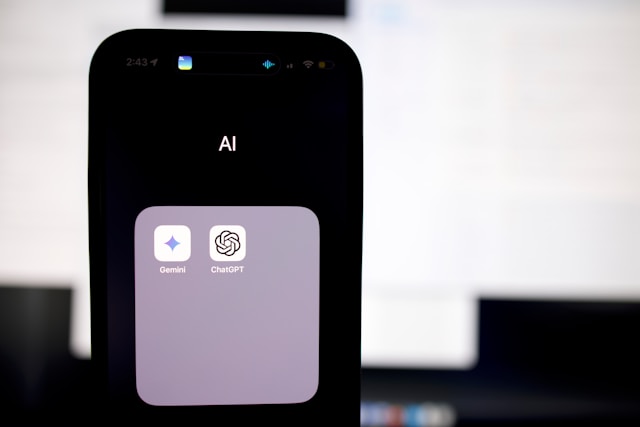Building AI-Powered Ad Recommendation Systems: Tips and Tricks for Developers
In this blog post, we will delve into the intricacies of building AI-powered ad recommendation systems and key tips and tricks that developers need to consider.
Join the DZone community and get the full member experience.
Join For FreeIn the ever-evolving landscape of digital advertising, businesses are constantly seeking innovative ways to optimize their marketing strategies to reach the right audience at the right time. One such innovation that has gained significant traction is AI-powered ad recommendation systems. These systems leverage the power of artificial intelligence and machine learning algorithms to deliver personalized and relevant advertisements to users, thereby increasing engagement and driving conversions.
In this blog post, we will delve into the intricacies of building AI-powered ad recommendation systems, exploring the key tips and tricks that developers need to consider to create effective and efficient solutions.
Understanding AI-Powered Ad Recommendation Systems
Before diving into the technical aspects, it's essential to have a clear understanding of what AI-powered ad recommendation systems entail. At their core, these systems utilize vast amounts of data, including user demographics, browsing history, past interactions, and contextual information, to predict which ads are most likely to resonate with individual users.
The process typically involves several stages, including data collection, feature engineering, model training, and inference. Data collection involves gathering relevant information about users and ads, while feature engineering focuses on transforming raw data into meaningful features that can be used by machine learning models. Model training entails using historical data to train algorithms to predict user preferences, and inference involves using these trained models to make real-time recommendations.

Tips for Building Effective AI-Powered Ad Recommendation Systems
1. Data Quality and Quantity
The success of any AI-powered recommendation system hinges on the quality and quantity of data available for training. Developers should ensure that the data collected is comprehensive, accurate, and representative of the target audience. Moreover, leveraging techniques such as data augmentation and data synthesis can help enhance the diversity of the dataset, leading to more robust models.
2. Feature Engineering
Feature engineering plays a crucial role in extracting meaningful insights from raw data. Developers should carefully design features that capture relevant user behaviors, preferences, and contextual information. Techniques such as collaborative filtering, content-based filtering, and matrix factorization can be employed to extract valuable features from user-item interactions.
3. Model Selection
Choosing the right machine learning model is paramount to the success of an ad recommendation system. Developers can experiment with various algorithms, including but not limited to logistic regression, decision trees, random forests, gradient-boosting machines, and neural networks. Ensemble methods such as stacking and blending can also be employed to combine the strengths of multiple models.
4. Personalization and Contextualization
Personalization lies at the heart of effective ad recommendations. Developers should strive to build models that can tailor recommendations to individual user preferences, behaviors, and interests. Additionally, incorporating contextual information such as time of day, location, device type, and browsing context can further enhance the relevance of ad recommendations.
5. Real-Time Inference
In today's fast-paced digital ecosystem, real-time inference capabilities are essential for delivering timely and relevant ad recommendations. Developers should optimize their systems to process and analyze user data in real time, leveraging techniques such as stream processing and microservices architecture. Furthermore, deploying models on scalable and distributed infrastructure can help handle large volumes of requests efficiently.
6. Continuous Monitoring and Evaluation
Building an AI-powered ad recommendation system is not a one-time endeavor; it requires continuous monitoring and evaluation to ensure optimal performance. Developers should implement robust monitoring mechanisms to track key performance metrics such as click-through rate (CTR), conversion rate, and revenue generated. Additionally, incorporating feedback loops and A/B testing can help iteratively improve the system over time.
Challenges and Considerations
While AI-powered ad recommendation systems offer tremendous potential, they also pose several challenges and considerations that developers need to address:
- Privacy and data security: As ad recommendation systems rely heavily on user data, developers must prioritize privacy and data security to protect user information from unauthorized access or misuse.
- Algorithm bias and fairness: Bias in algorithms can lead to unfair or discriminatory outcomes, highlighting the importance of ensuring fairness and diversity in ad recommendations.
- Interpretability and transparency: The opacity of machine learning models can hinder transparency and trust. Developers should strive to build models that are interpretable and provide insights into how recommendations are generated.
- Regulatory compliance: Ad recommendation systems must comply with relevant regulations and guidelines, such as GDPR and CCPA, to safeguard user rights and data privacy.
Future Directions and Emerging Trends in AI-Powered Ad Recommendation Systems
Looking ahead, several future directions and emerging trends hold the potential to shape the landscape of AI-powered ad recommendation systems:
1. Multi-Modal Recommendations
With the proliferation of multimedia content, multi-modal recommendation systems that leverage text, images, audio, and video data offer new opportunities for delivering rich and engaging ad experiences. Developers can explore multi-modal recommendation techniques, such as cross-modal retrieval and fusion, to enhance the relevance and diversity of ad recommendations across different content types.
2. Federated Learning and Privacy-Preserving Techniques
Federated learning enables model training across distributed devices or data sources without sharing raw data, addressing privacy concerns and regulatory requirements. Developers can adopt federated learning and privacy-preserving techniques to build collaborative recommendation models while protecting user privacy and data confidentiality.
3. Context-Aware and Intent-Based Recommendations
Context-aware recommendation systems consider contextual factors such as user location, device type, and temporal dynamics to deliver more personalized and relevant ad recommendations. Integrating intent-based recommendation techniques, such as semantic understanding and natural language processing (NLP), can further enhance the alignment between user intent and ad content, improving the overall user experience.

4. Augmented Reality (AR) and Virtual Reality (VR) Advertising
As AR and VR technologies continue to advance, advertisers are exploring innovative ways to deliver immersive and interactive ad experiences. Developers can leverage AR and VR technologies to create immersive ad formats using contextual targeting that blend seamlessly with the user's environment, offering new opportunities for engagement and brand storytelling.
5. Contextual Graph Representation Learning
Graph representation learning techniques enable the modeling of complex relationships and interactions between users, items, and contextual factors in ad recommendation systems. Developers can explore contextual graph representation learning algorithms to capture rich semantic relationships and dependencies, leading to more accurate and interpretable ad recommendations.
Conclusion
AI-powered ad recommendation systems represent a powerful tool for marketers to deliver personalized and relevant advertisements to users. By leveraging advanced machine learning techniques and best practices in software engineering, developers can build effective and efficient recommendation systems that drive engagement and conversions.
However, it's essential to approach the development process with careful consideration of data quality, model selection, personalization, and ethical considerations. By addressing these challenges and incorporating the tips and tricks outlined in this post, developers can create ad recommendation systems that deliver tangible value to both businesses and users alike.
Opinions expressed by DZone contributors are their own.

Comments